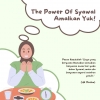Editing Term
I: ...I don't agree with this existence of this Petra Christian, eh, Petra Square Apartment, because...
This eh in the utterance above is the example of filler that functions to edit the term. I was supposed to say 'Petra Square Apartment', but s/he made a mistake, that is saying 'Petra Christian University'. Realizing her/his mistake at the moment of speaking, I directly corrected that mistake by using eh, followed by the correct one.
By viewing Table 4.2 especially to the columns of Silent Pauses, we can see a similarity and the differences between the first and the seventh semester students. The similarity is both the first and the seventh semester students used all types of silent pauses (.), (--), and (---) to hesitate as the most frequently used function, compared to the other functions. Then, the difference is the first semester students use less unit (.) to hesitate, which is 10.44%, compared to the seventh ones, which is 11.79%. In contrast, the first semester students used more numbers of double unit (--) and treble unit (---) to hesitate than the seventh semester students, which is two times bigger, 5.70% : 2.12% and 1.90% : 0.71%. Another difference is the first semester students did not use unit (.) to edit the term, while the seventh semester students did not use unit (.) to interrupt.
Then, we can see a similarity and the differences between the first and the seventh semester students in using fillers for a certain purpose if we pay more attention to the columns of Unlexicalized Filled Pauses from Table 4.2. The similarity is both the first and the seventh semester students produced unlexicalized filled pause to hesitate as the most frequently function used, followed by to fill the Pause. Then, the difference is the first semester students produced ee to fill the pause and to edit the term for around two times smaller than the seventh semester students, which is 16.27% : 8.23% and 2.36% : 1.27%.
After that, the columns of Lexicalized Filled Pauses from Table 4.2 shows us that there are a similarity and the differences between the students from the first and the seventh semester. The similarity is both the first and the seventh semester students produced lexicalized filled pause to fill the pause as the most frequently function used, followed by to empathize in the second position, and to hesitating in the third position. Then, the difference is the first semester students used I see to empathize for more than four times bigger than the seventh semester ones, which is 2.22% : 0.47%. Besides, the first semester students used well to fill the pause for 4.75% and to hesitate for 1.90%, while none of the seventh semester students produced, even used well for a certain purpose. It also happened for what is it, since none of the first semester students produced it, while the seventh semester students used it to hesitate for 1.65%. Another difference is ya was used less frequently by the first semester students than the seventh semester students in order to fill the pause, which is 1.90% : 7.55%.
From the total number of each function of fillers, the most popular functions of fillers used by both the first and the seventh semester students is to hesitate, and followed by to fill the pause in the second position. Editing the term is the least frequently used function of filler by the first semester students, while interrupting is the least frequently used function of filler by the seventh semester students. Both the first and the seventh semester students did not produce fillers to mitigate in their spoken interaction.
4.2 Interpretations on the Findings








